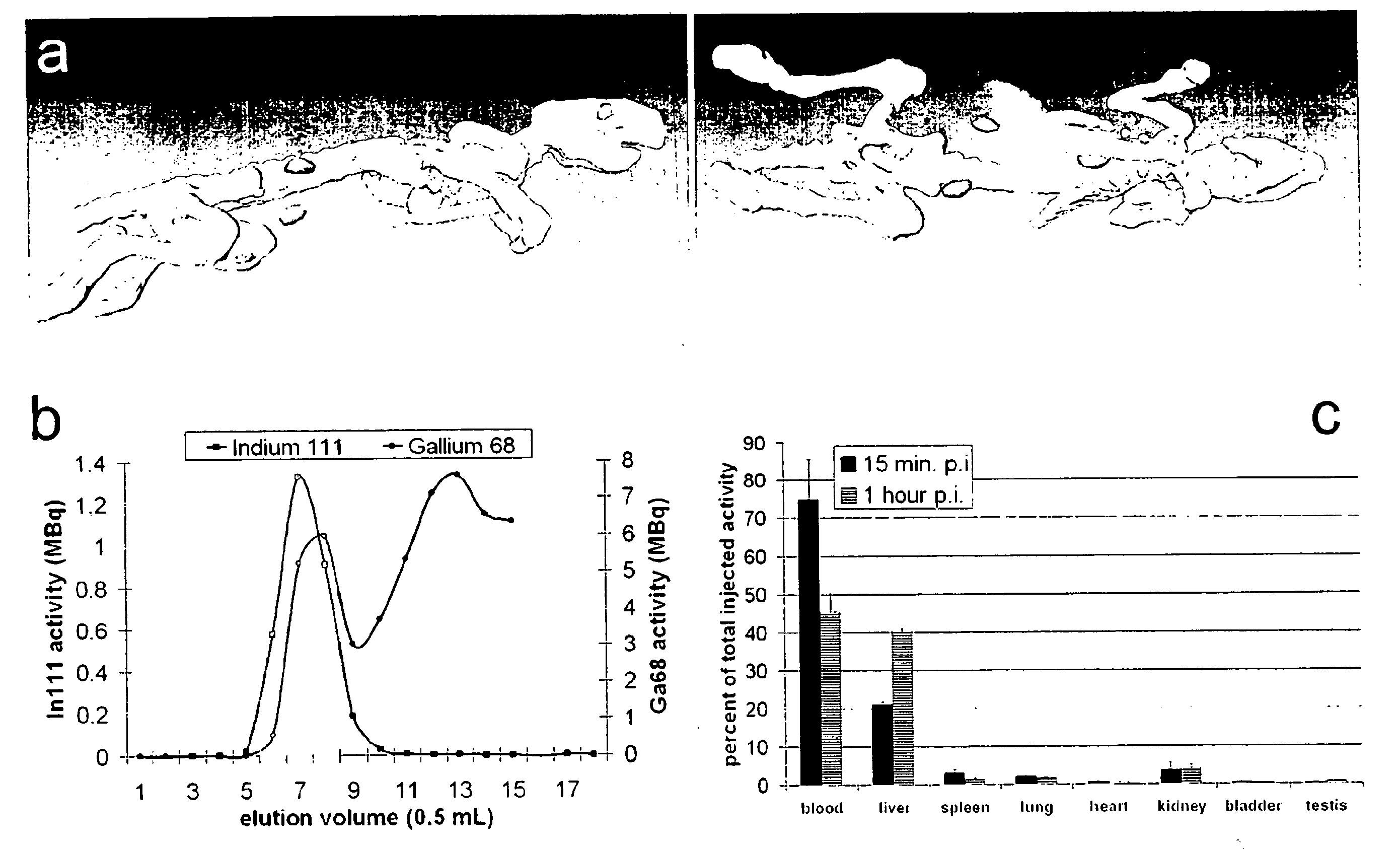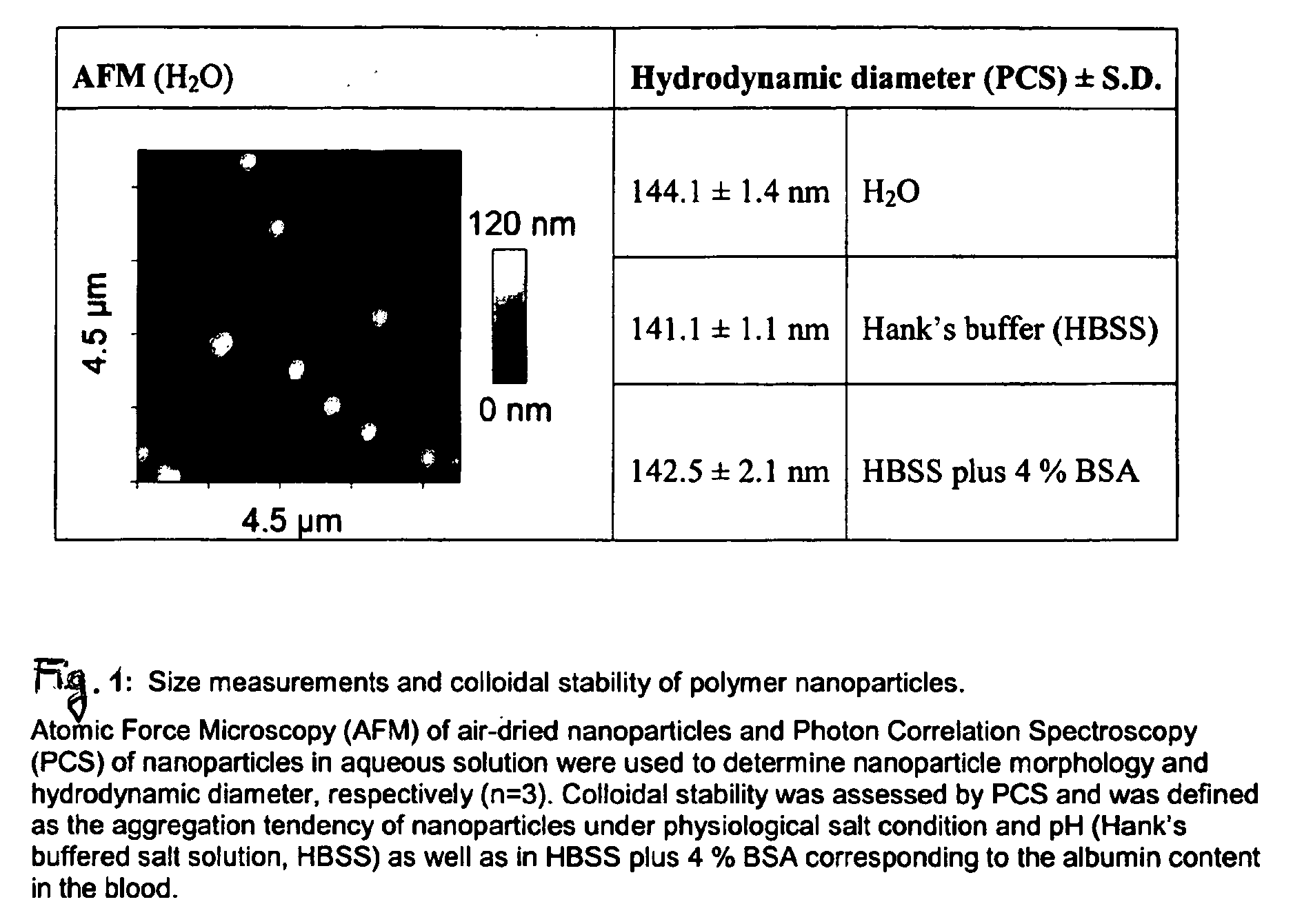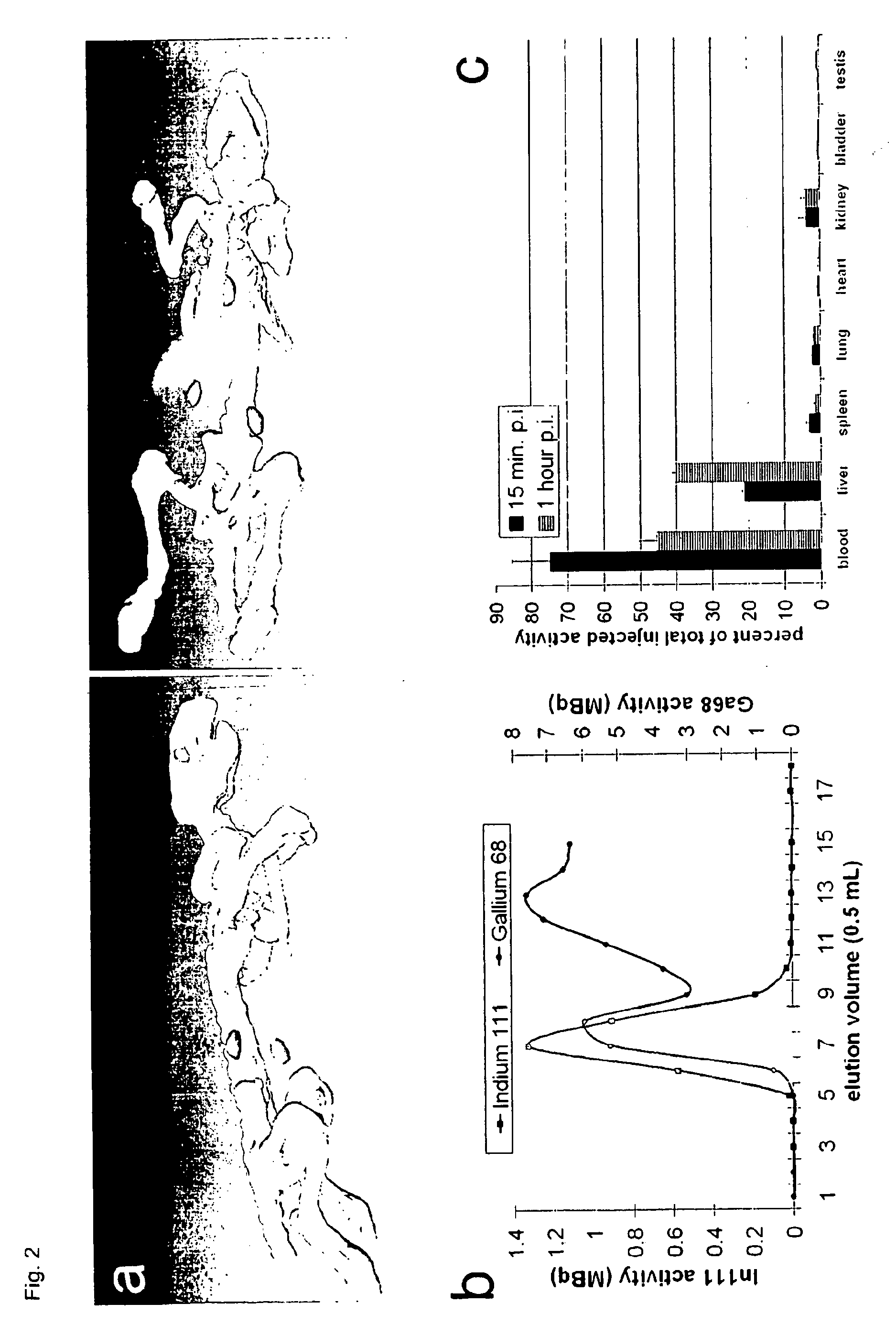Multimodal imaging using a three compartment polymer nanoparticle with cell specificity
- Summary
- Abstract
- Description
- Claims
- Application Information
AI Technical Summary
Benefits of technology
Problems solved by technology
Method used
Image
Examples
Embodiment Construction
[0007]Nanoparticle technology is a rapidly emerging field and advanced to clinical applications within the last few years [1-3]. High expectations have been raised for the development of novel high-resolution diagnostics and drug nanocarriers for more efficacious and personalized therapies [4]. The scientific ground was set through our increasing understanding of disease at the molecular level and recent developments in material sciences enabling the production of nanostructured and biocompatible materials.
[0008]One obvious advantage in using nanoparticles is to obtain a higher surface to mass ratio of the carrier system permitting relatively high local concentrations of the delivered substances [5]. Colloids also have particular physicochemical properties affecting their pharmacokinetics and in vivo compartmentalization [6]. Unlike soluble substances which generally disseminate from the site of injection and are rapidly cleared by the renal system nanoparticles are usually confined...
PUM
 Login to View More
Login to View More Abstract
Description
Claims
Application Information
 Login to View More
Login to View More - R&D
- Intellectual Property
- Life Sciences
- Materials
- Tech Scout
- Unparalleled Data Quality
- Higher Quality Content
- 60% Fewer Hallucinations
Browse by: Latest US Patents, China's latest patents, Technical Efficacy Thesaurus, Application Domain, Technology Topic, Popular Technical Reports.
© 2025 PatSnap. All rights reserved.Legal|Privacy policy|Modern Slavery Act Transparency Statement|Sitemap|About US| Contact US: help@patsnap.com



